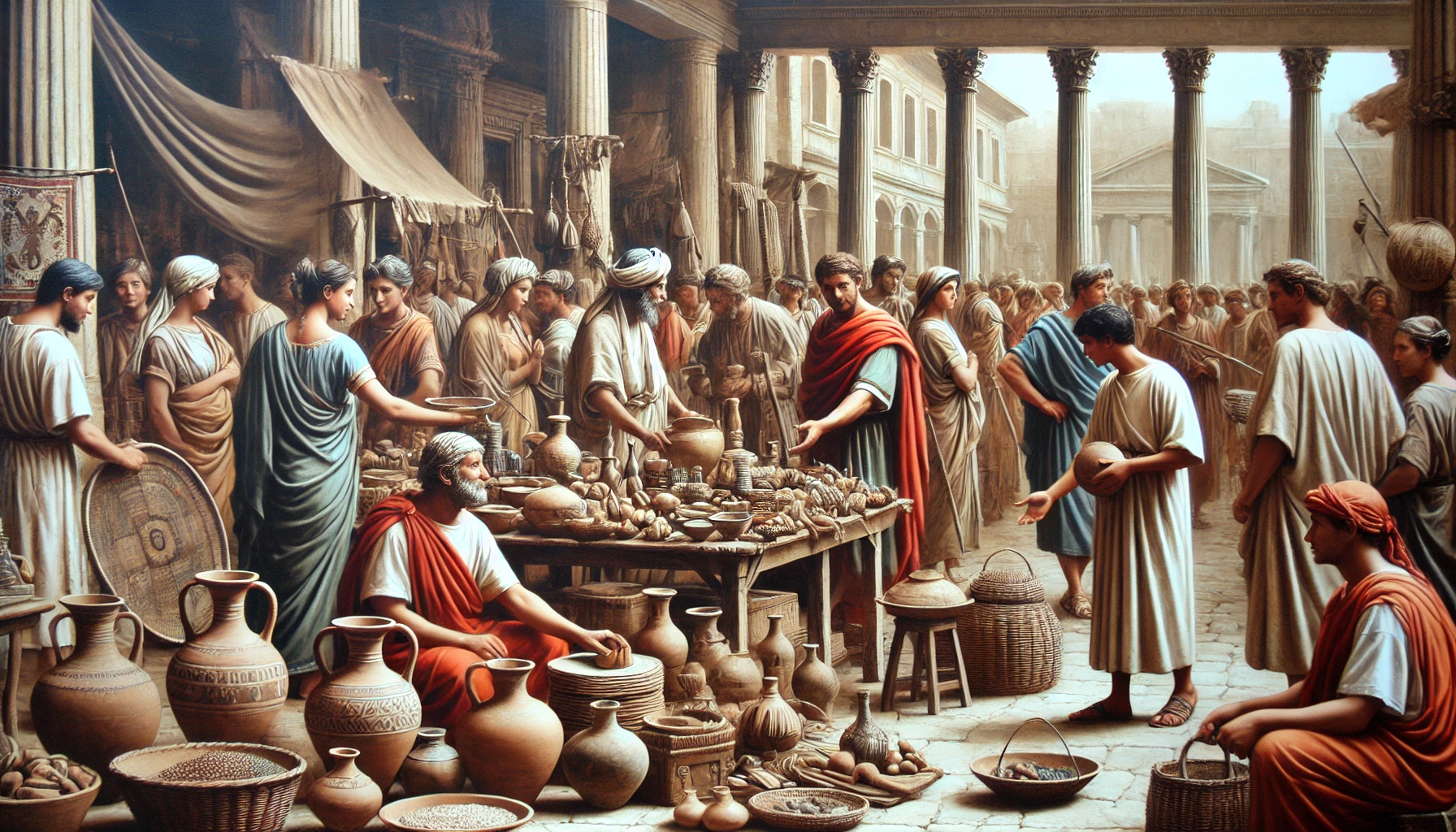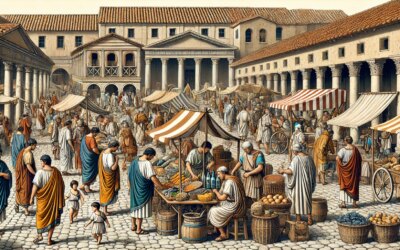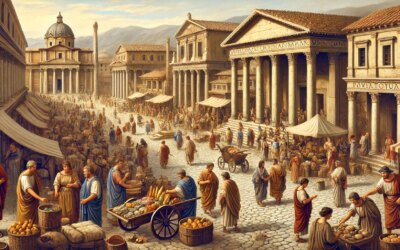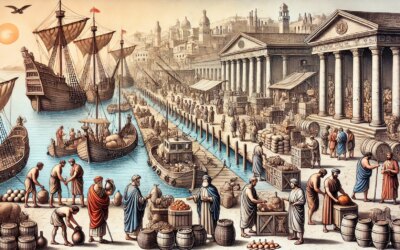Introduction
Trade and commerce were the lifeblood of ancient Rome. From the grand markets of the capital to small provincial trading posts, the empire’s economy was fueled by the movement of goods, merchants, and money. At the heart of it all were Rome’s bustling marketplaces, where citizens from all walks of life gathered to buy, sell, and socialize.
The Markets of Rome
Rome’s economic activity centered around several key markets, each specializing in different goods. Among the most important were the Forum Boarium (cattle market), the Forum Holitorium (vegetable market), and the famous Trajan’s Market, considered one of the world’s first shopping malls.
Trajan’s Market: The Ancient Shopping Center
Built in the early 2nd century AD under Emperor Trajan, this sprawling complex featured over 150 shops and offices. Merchants sold everything from textiles and wine to rare spices and exotic animals, offering Romans a diverse shopping experience. The market also included administrative offices, highlighting its role as a center of both commerce and governance.
Merchants and Goods
Roman markets were a melting pot of cultures, as traders from across the empire brought their wares. Merchants from Egypt sold grain, artisans from Gaul offered fine ceramics, and traders from the East provided luxurious silk and spices. The variety of goods available reflected the vast reach of Rome’s economy.
Daily Transactions and Currency
Trade was conducted using a standardized monetary system based on coins such as the denarius. Markets operated on a mix of barter and currency exchange, with prices fluctuating based on supply and demand. Wealthy patricians sent slaves to purchase goods, while common citizens haggled for daily necessities.
The Role of Markets in Roman Society
Markets were more than just centers of commerce; they were social hubs. Citizens gathered to hear political news, discuss business, and exchange gossip. Public speeches, legal proceedings, and religious ceremonies often took place near marketplaces, reinforcing their role as the beating heart of Roman society.
Regulation and Taxes
The Roman state actively regulated trade to maintain order and ensure fair pricing. Officials known as aediles oversaw market activities, inspecting goods and enforcing trade laws. Taxes and tariffs were collected on imported goods, providing revenue for public works and the military.
Legacy of Roman Trade
The trade networks established by Rome laid the foundation for modern economic systems. The principles of taxation, market regulation, and large-scale commerce influenced economies for centuries. The remains of ancient markets, such as Trajan’s Market, continue to stand as reminders of Rome’s commercial ingenuity.
Modern Parallels
From open-air markets to large shopping centers, the influence of Roman trade practices can still be seen today. The concept of organized marketplaces, taxation, and long-distance trade remains a fundamental aspect of modern economies.
Conclusion
The markets of ancient Rome were more than places of trade—they were symbols of the empire’s economic strength and cultural diversity. By examining their role, we gain insight into the daily lives of Romans and the intricate system that sustained one of history’s greatest civilizations.






